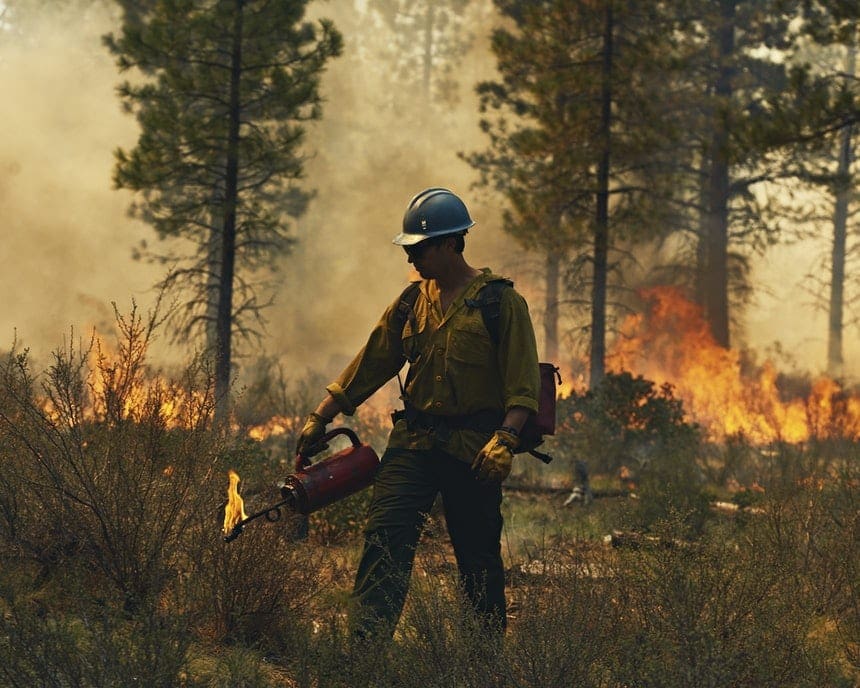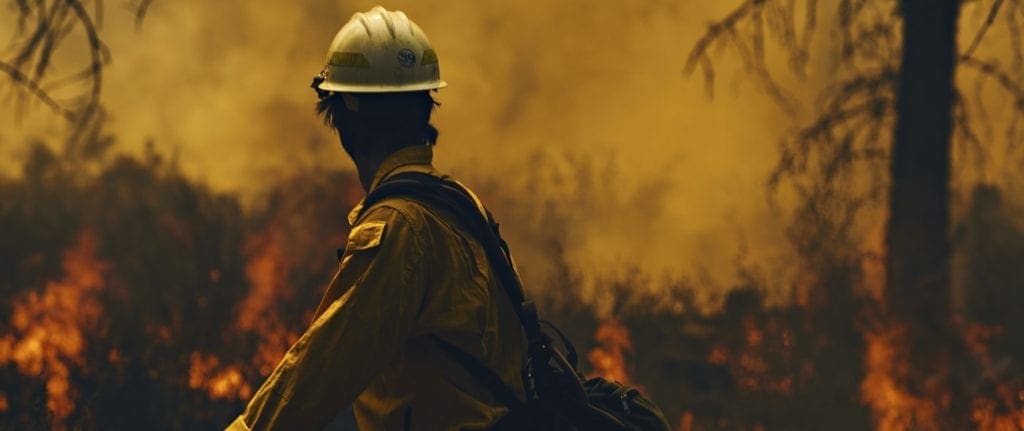|
Getting your Trinity Audio player ready...
|
“Wildland fire can be a friend and a foe.” So states the United States Forest Service (USFS). But what does that mean? Most of us are only familiar with the wildfires featured on the news, raging infernos destroying everything in their paths. Whatever they might be, these fires do not look much like our friends. However, what is dangerous when too big can still be useful given the right amounts.
Primitive man eventually learned about fire, probably the hard way – through experience. Fire is too hot to touch, it will burn you given the chance, and of course, it can easily get out of control. But given the proper precautions and handling, fire can also provide you with light at night, as well as cook your food and keep you warm. Dangerous or not, fire is still a great ally of humanity.
The world’s forests have a similar love/hate relationship with fire. Too much of it can cause great devastation, while much smaller amounts can heal and safeguard the woods. It sounds contradictory, but fire has been a key forest management tool for a very long time. In Filson Film’s short video, Fighting Fire with Fire, the filmmakers explore this fascinating dynamic as they follow some daring members of the Forest Service on the job, deploying small amounts of fire to help the forest ecosystems.
The US Forest Service attracts a certain type of individual. Of course, they need to be tough and hardy, but the more common threads seem to be intelligence and motivation. Everyone is different, but the Forest Service groups seem to have family-like bonds, developed over years of training and sweating through their very difficult jobs together. It helps that they seem one-hundred percent clearly aligned, “We all have the same goal – the big picture of the Forest Service. Everyone’s out here for the right reason.”
The concept of having national forests and forest management literally dates back to Theodore Roosevelt, nearly 120 years ago. Today, the Forest Service, operating under the US Department of Agriculture, is responsible for 193 million acres of forests and grasslands, including 154 national parks. As you can imagine, conducting forest management properly is not just strenuous but also hugely important.
The basics of why they do what they do are well explained at the beginning of the film, with serious voices narrating over dangerous scenes of foresters out doing their work in heavy smoke-thick air. “There’s an overabundance of trees. That’s where our problem lies. The real deal is, this [fire] needs to happen.” It sounds odd – the idea that there could be too many trees in a forest.
But on the other hand, we have all heard game managers explain how there are too many deer in the herd for it to thrive. And for the overall health of the herd, a certain number of deer should be annually culled. This is nature’s version of the saying that sometimes less is more.
The forests, of course, evolved around the inevitable periodic wildfires. They are a continual part of the natural environment, and the forests are built to expect them. But in their absence, the forests have the same problem as the overcrowded deer herd – it’s an unhealthy situation. The forest managers know this, and one explains, “Just like you have rainforests, this is a fire forest.” It is sometimes difficult for the untrained to appreciate this unusual idea, but it’s true. Another one remarks, “Putting fire back into an ecosystem is HUGE.”
Watching the video, you get a sense of how incredibly motivated these women and men are. They have to be because the work is dangerous and exhausting, and none of them are getting rich from this job, even with all the risks they must take. It takes years of training, and with all the complicated specialized equipment and physical labor, it is a huge life commitment.
Airborne Fighters make up part of the crew, meaning they go out into the field via air. There are two groups – the Smoke Jumpers, who parachute out of airplanes, and the Helicopter Rappellers, who drop down from helicopters using attached ropes. One cannot say this job lacks excitement! There are several great clips from the view of a jumper, leaping out of an airplane, heading down, and landing on a tree. It is a very inventive way to get these people to parts of the forest they could not normally access.
The downside of being an Airborne Fighter is that they do not return home the same way they left. Once their fire-spreading is finished, they have to pack up all the heavy gear, put it on their backs, and eventually hike all the way out. If they are lucky, it will only be a few miles. When unlucky, it might be a 20-mile trek. Obviously, you must be in great shape to do this, as the film attests with various looks at their physical training … pull-ups, all kinds of cardio, ropework, you name it.
Just like a firefighter, the work doesn’t end when you return to the base. They sew up and repair all their specialized gear, jump bags, jump suits, and parachutes themselves. At the back of the base is a huge room with 40 or 50 industrial sewing machines. When you first begin this job and arrive as a rookie and start all the training, this sewing room is the very last room you are allowed into, mostly because of the importance of parachute repair and organization. No one wants the newbie messing around with the parachutes!
Proper modern forest management is a huge and difficult job. And the concept of purposefully setting fires in the forest seems, at first, not to be the proper thing for them to do. But then you balance the idea of having very small fires using up the kindling frequently, versus allowing the forest tinderbox to build up dangerously for decades until a truly enormous blaze destroys everything. As one of the forest management specialists says, “Getting back to burning means getting back to proper land management.” And doing things correctly can be hugely motivating, especially when it is the natural world you are protecting.
Watch the Filson Film, Fighting Fire with Fire, here:
About Filson
Established in Seattle in 1897 to outfit prospectors headed for the Yukon, the company’s 126-year legacy is built upon its reputation for honesty, quality and durability. Filson’s long-lasting gear is the choice of explorers, adventurers, ranchers, hunters, anglers, engineers and anyone with a passion for the outdoors. Over a century after its founding, the Filson headquarters remain in Seattle, Washington.
Filson x Smokey Bear Collection: Celebrating an Icon of Forest Ecology
Filson + Ducks Unlimited Collaborate To Protect Wildlife By Preserving Natural Habitats
Filson x Meta Are Extraordinarily Present











